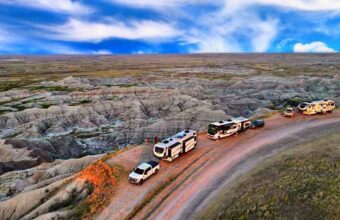Western US National Park Road Trips
Road trips to the best national parks in the West
Combining the awe-inspiring national parks of the Western USA into a single road trip makes for a true Americana adventure.
From the Grand Canyon to the Rocky Mountains, here are a few spectacular long-distance routes.
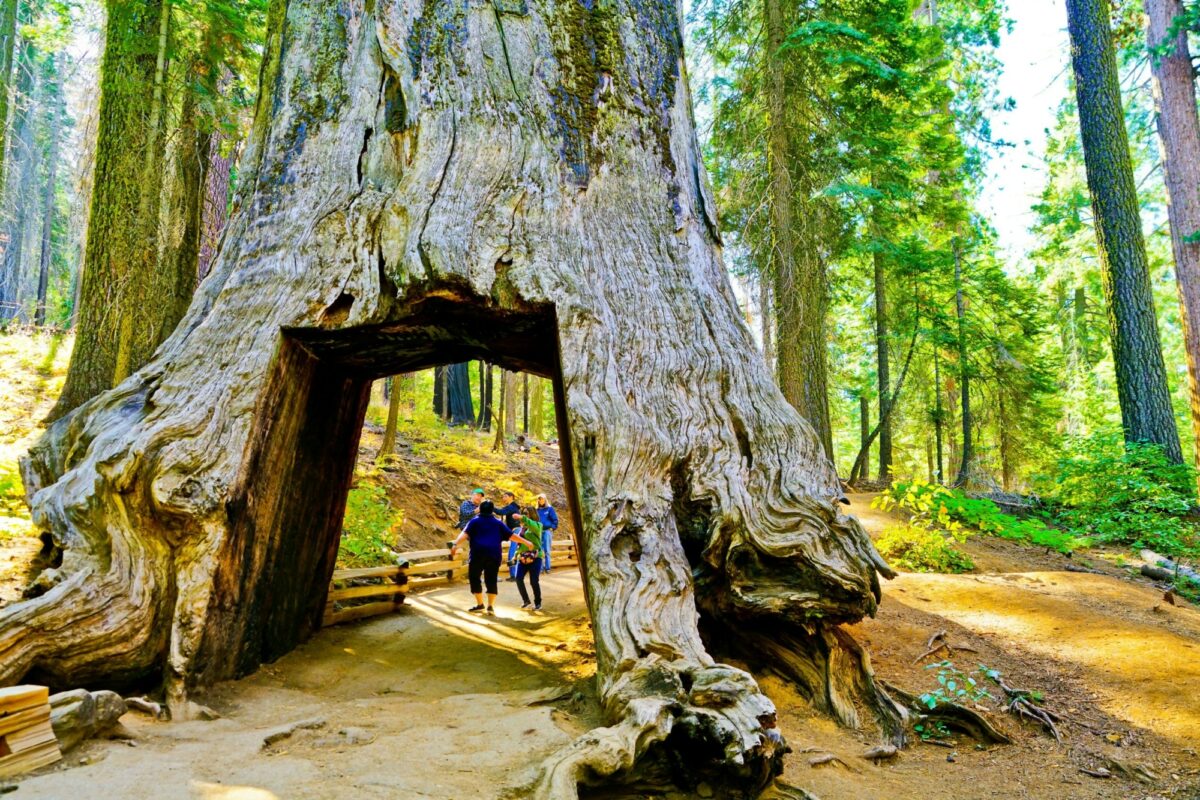
Larger than life in Yosemite National Park
West coast national park road trip route
Take in the magnificence of the western United States mountains, while also walking among some of the world’s biggest trees and get sprayed by a few of North America’s largest waterfalls on this route. This inland tour of the best mountainous parks in Washington, Oregon, and California includes crowd favourites Olympic National Park, Crater Lake National Park and Yosemite National Park.
West coast national park road trip route
Approx. distance: 1,700 miles
Duration: 14 days
Suggested route: Seattle, Olympic National Park, Mount Rainier National Park, Crater Lake National Park, Lassen Volcanic National Park, Yosemite National Park, Sequoia and Kings Canyon National Parks, Los Angeles.
The route
Just three hours from the northwest city of Seattle – including a ferry ride – is Olympic National Park, which is home to glacier topped mountains, rainforests and a wild and rugged coastline.
Another three-hour drive takes visitors from Olympic National Park to the year-round splendour of Mount Rainier National Park. The route heads south of Puget Sound and its tributaries.
Getting from Mount Rainier National Park in Washington down to Crater Lake National Park in southern Oregon is a more involved 6 ½-hour drive. Luckily, the route passes through both Portland and Eugene, where you can stop for a few hours or overnight.
From Crater Lake National Park to northern California’s Lassen Volcanic National Park is a four-hour drive. Detour to Lava Beds National Monument to explore one of the preserved area’s 800 caves.
During summer, take US 395 alongside the eastern portion of California from Lassen Volcanic National Park to Yosemite National Park. It takes 5 ½ hours and passes through Reno in the state of Nevada, which is a perfect place for a stop or an overnight stay.
Less than three hours from Yosemite are the Sequoia and Kings Canyon National Parks, which is less busy than Yosemite but almost as beautiful. The adjacent parks are about four hours from both San Francisco and Los Angeles.
What to see
Olympic National Park
With nearly a million acres, Olympic National Park offers a variety of experiences including hiking, soaking in hot springs (Sol Duc Hot Springs and Olympic Hot Springs), and sliding down a snowy peak at the Hurricane Ridge Ski and Snowboard Area. Port Angeles is the biggest city on the Olympic Peninsula and a great place to plan your trip into the park.
Mount Rainier National Park
While its namesake 14,410-foot-high (4,392m) peak dominates the scenery, Mount Rainier National Park also has worthwhile hiking in the Tatoosh Range and waterfalls in the Carbon River area. In springtime, the park has a profusion of blooming wildflowers and rushing waterfalls.
Try a day hike along the 5.5 mile-long Skyline Trail, which butts up against Mount Rainier. Check out the views at Panorama Point. Alternatively, take alpine lakes, mountain peaks and stunning views on the Snow Lake Trail, which is a much easier 2.5-mile round trip.
Mount Rainier National Park is well-known for its many waterfalls, but perhaps the easiest one to see is the 176ft high Narada Falls. It’s a short hike from the car park of the same name to the bottom of the waterfall.
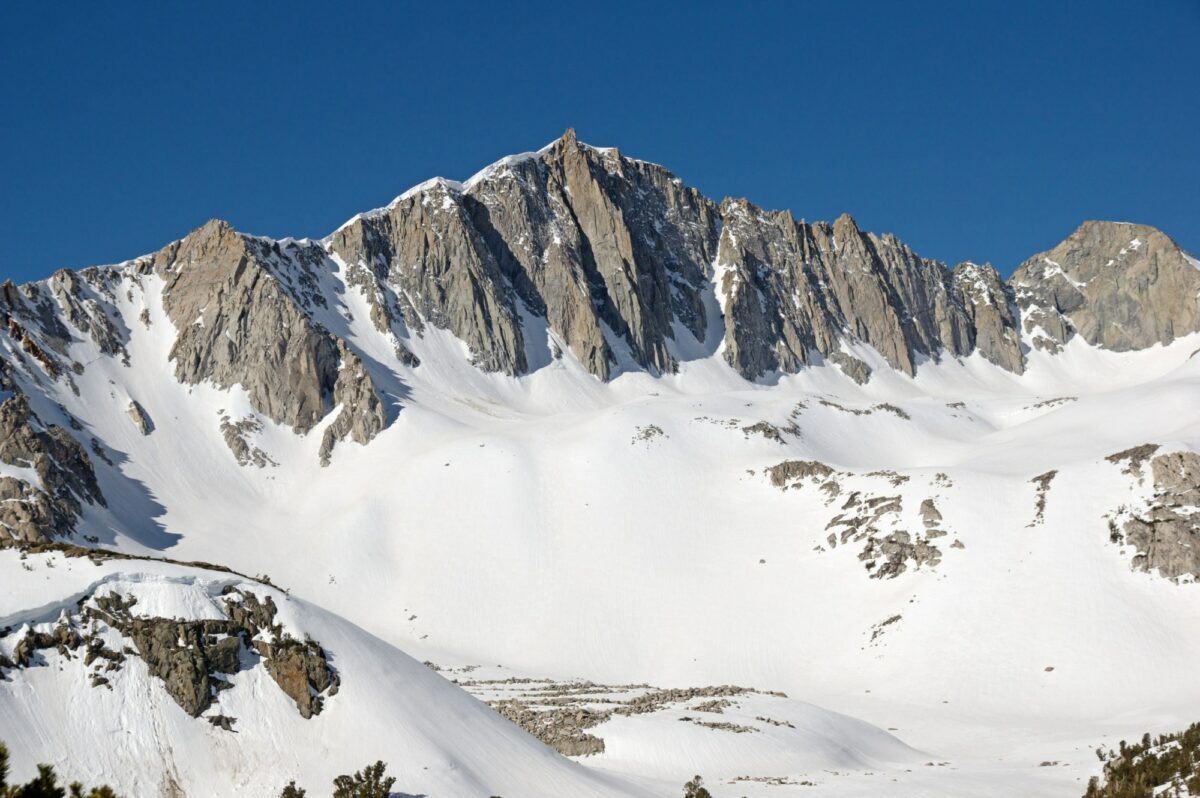
Sierra Nevada mountain range
Crater Lake National Park
Oregon’s dazzling blue Crater Lake, a remnant of a volcano, is worth spending some time staring at. To see the water up close, take one of the park’s many boat tours. Another option is to do the 33-mile long (53km) Rim Drive for views down into the lake from different vantage points. Roads are generally open in the Crater Lake National Park between July and October. If you come in winter, the park’s North Entrance Road is excellent for snowmobiling, while some trails become passable for cross-country skiing.
Lassen Volcanic National Park
A hotbed of geothermal activity, Lassen Volcanic National Park has mud pots, boiling pools and fumaroles (an opening near a volcano which releases gas). There’s boating, kayaking, and fishing in the park, but hiking through a lava tube at Lassen is one of the park’s singular experiences. Try the wincingly-named Bumpass Hell Trail – so named for Kendall Bumpass who fell into scalding water here – for views of boiling mudpots, turquoise pools and Brokeoff Volcano. Alternatively, try the 4.2 mile Devil’s Kitchen Trail for steaming streams and alpine lakes.
Lassen is one of the best places in California to go star-gazing. Park rangers lead astronomy tours during the summer, and the annual Dark Sky Festival, held in August, offers nightly stargazing tours and talks by professional astronomers.
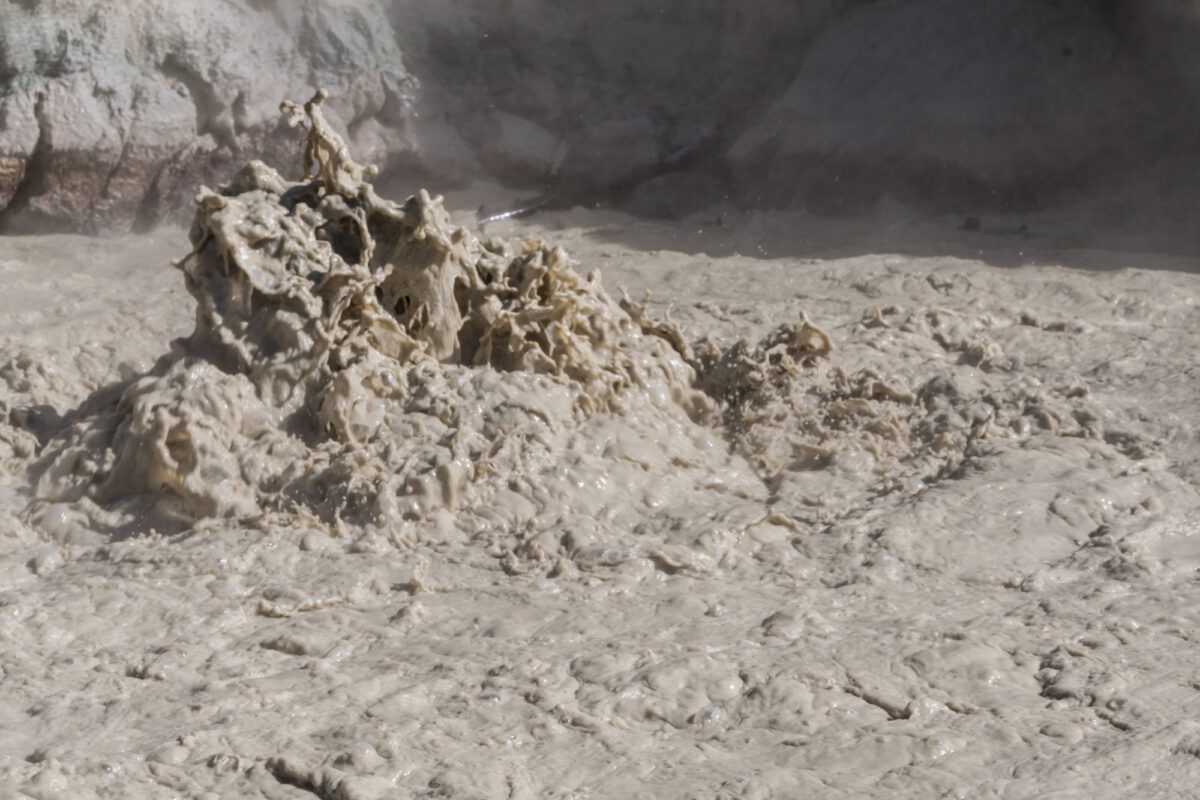
Bubbling sulphur pool, Lassen Volcanic National Park
Yosemite National Park
The most popular national park in California, Yosemite includes the world-renowned Yosemite Valley, which is beneath notable granite peaks including Half Dome and El Capitan – famous among rock climbers for their stunning views and difficult climbs. Head to the 7,214ft Glacier Point for views over Yosemite Valley, or head inside the granite Geology Hut for vistas of Half Dome. Come at sunrise or sunset, when the giant granite peaks turn a rosy pink. There’s more than just towering peaks in Yosemite. Mariposa Grove showcases giant sequoia trees, while Yosemite Falls is North America’s highest waterfall at 2,425 feet (739 metres). It is possible to hike up to the upper fall’s crest, but be aware that the water’s spray can be very cold.
Such is the diversity of activities in Yosemite National Park, that you can do anything from fishing and gold panning to spas and shopping.
Sequoia and Kings Canyon National Parks
The adjacent parks of Sequoia and Kings Canyon are a fine place to take in the splendour of the Sierra Nevada Mountains, the towering sequoia trees, and geologic formations like Moro Rock. Sequoia is where you can find legendary trees including the General Sherman Tree (allegedly the largest tree on earth) and the General Grant Tree.
Spring and summer bring wildflower blooms to both parks and bears are plentiful. This is a great stop for those looking for wilderness away from the busier Yosemite National Park.
Western US self-drive tours
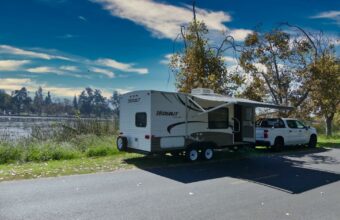
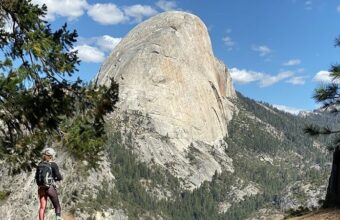
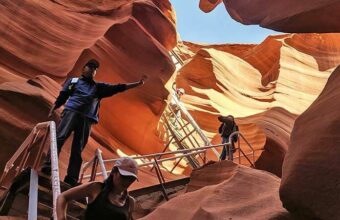
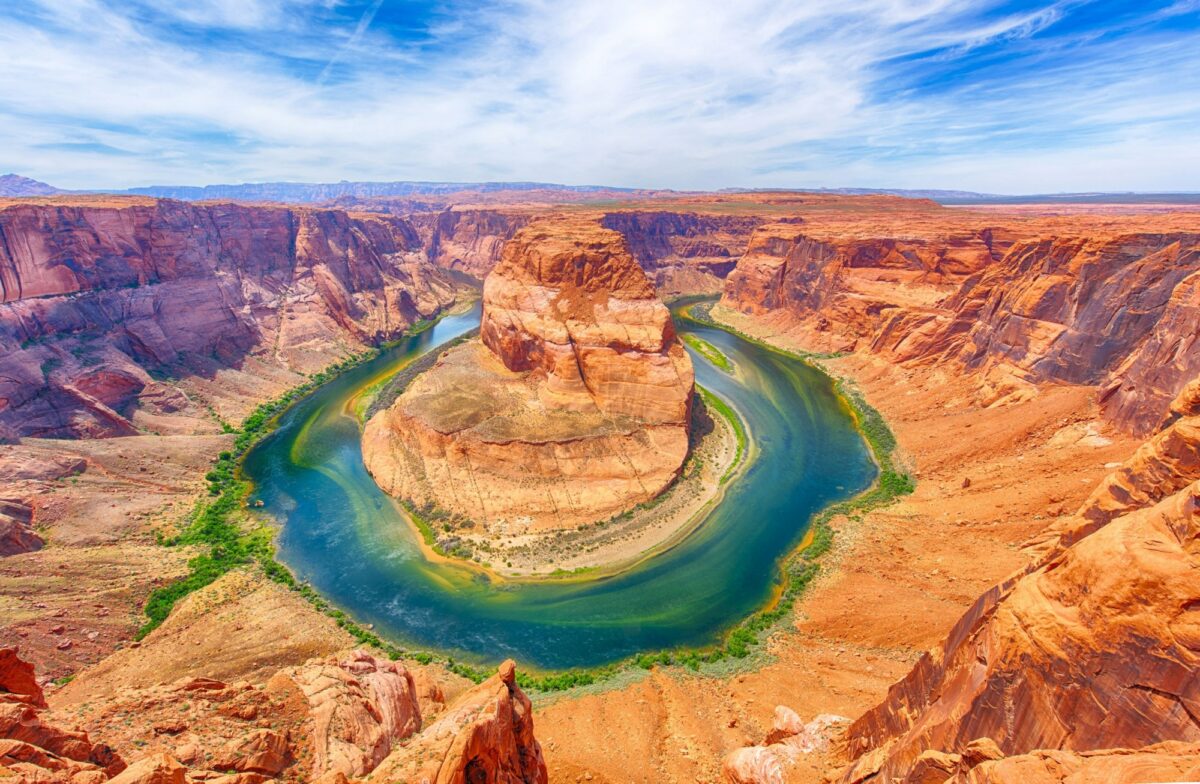
Horseshoe Bend, Colorado River in the Grand Canyon
Grand Canyon to Rocky Mountains road trip
Experience the dizzying peaks and deep canyons of the American southwest on this route. The drive includes the alpine scenery of the Rocky Mountain National Park and the mile-deep Grand Canyon, as well as stops to visit the tallest sand dunes in the United States (Great Sand Dunes National Park) and North America's oldest archaeological site (Mesa Verde National Park).
Grand Canyon to Rocky Mountains road trip
Approx. distance: 1,400 miles
Duration: 10 days
Suggested route: Denver, Rocky Mountain National Park, Great Sand Dunes National Park, Mesa Verde National Park, Grand Canyon, Phoenix.
The route
Start your journey in Denver, Colorado, before driving an hour and a half to Estes Park, at the eastern entrance to Rocky Mountain National Park. After a couple of days hiking and marvelling at the Rocky Mountains, it is a five-hour drive to Great Sand Dunes National Park. Consider detouring into the pleasant city of Colorado Springs and visiting Garden of the Gods, where you can walk around fanciful sandstone rock formations.
It’s a four-hour drive across southern Colorado to reach Mesa Verde National park from Great Sand Dunes National Park. Just 40 minutes from the park, Durango is a pleasant city at 1,981 metres with a historic downtown.
The drive to the Grand Canyon from Mesa Verde takes four hours with much of it passing through the Navajo Nation. Fans of western movies should detour off US Route 160 onto US Route 163 at Kayenta, Arizona to make the 45-minute drive to Monument Valley, a butte-studded desert featured in many western movies.
From the Grand Canyon, it’s an hour and a half to Flagstaff, a pleasant college town, and a four-hour drive to Phoenix, where there is a major airport.
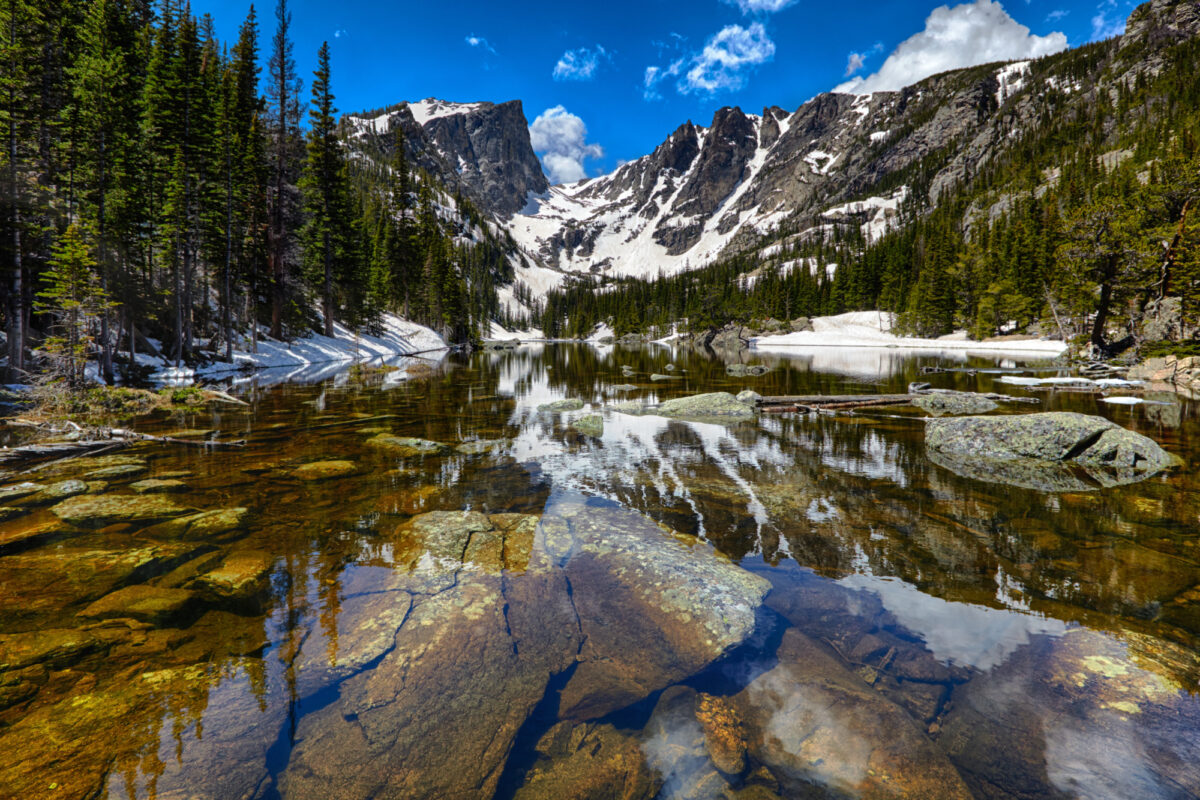
Dream Lake, Rocky Mountain National Park
What to see
Rocky Mountains National Park
One of the highest national parks in the United States, the Rocky Mountain National Park includes the 14,258-foot-high Longs Peak (4,345 metres) and 300 miles of hiking trails. Much of the park can only be accessed during the summer months, with winter snows closing mountain roads. During peak season of mid-June to Labor Day, consider spending time in the less crowded western side of the park. In that area are opportunities to hike, picnic, and visit the Holzwarth Historic Site, a homestead from the early 1900s.
Be aware that altitude sickness can be an issue in the Rocky Mountains, even when driving. For example, Trail Ridge Road is more than 3,500m above sea level, so go slow, drink plenty of water and pay attention to the signs of altitude sickness, such as headaches and shortness of breath.
A couple of hiking trails to consider are an easy two-mile hike through Dream, Nymph and Emerald Lakes (extend to Lake Haiyaha for an alpine lake surrounded by boulders and ancient trees), or a waterfall hike to Alberta Falls near Glacier Gorge Junction. Before starting any hike, it's worth heading to the Park's visitor centre to get maps, find out about road and trail closures and to speak to rangers.
Be aware of wildlife while hiking on more remote trails. The Rocky Mountain National Park is home to elk, deer, mountain lions and bears, and you are likely to encounter wildlife on your trip. If you see a bear, stand still and stay calm, giving the bear the opportunity to leave. If it doesn't leave, make yourself look as big as possible and throw small rocks to try to scare it away. If the bear charges, the advice from the US National Park Service is to fight back.
Great Sand Dunes National Park
One of Colorado's lesser-visited parks, Great Sand Dunes National Park has 30 square miles of dunes including one that is 750 feet tall (228 metres). You can hike up the towering dunes (it is a five hour round trip to the summit), or even better, ride down them on a sleigh, even in the summer. Also, the park is a great place to take in the Milky Way stretching across the night sky, with the park open all day and night.
Mesa Verde National Park
The reason to visit Mesa Verde National Park is to see one of its ancestral Puebloan cliff dwellings. Ranger-guided tours of the unique structures including Cliff Palace, the largest cliff dwelling in North America, are offered in the park.
The park also has hiking trails including the 7.8-mile round-trip (12.5km) Prater Ridge Trail and the 2.4-mile round-trip (3.8km) Petroglyph Point Trail that goes to a petroglyph (rock carving) panel.
Grand Canyon National Park
Once in Grand Canyon National Park, there’s much more to do than stare into the amazing chasm. The Rim Trail offers different views from the top of the canyon on a mostly paved path. Though it’s 13 miles long (21km), hikers can utilize the park’s shuttle bus system in place of doing the whole hike. The Bright Angel Trail (12 miles round-trip, 19km) is one of the US national park system’s best-known trails. It heads to the bottom of the canyon, a marvellous experience for those with plenty of water and stamina. It is recommended that hikers do just a portion of the hike down Bright Angel and back up to the rim as there are many rescues each year for underprepared hikers who overestimate their abilities.
Western US RV rentals
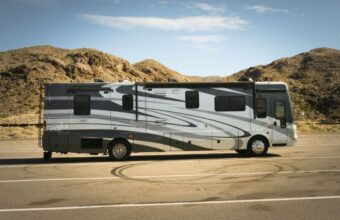

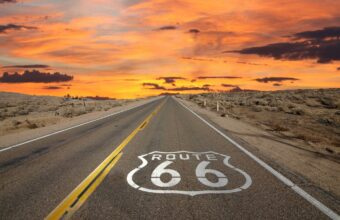
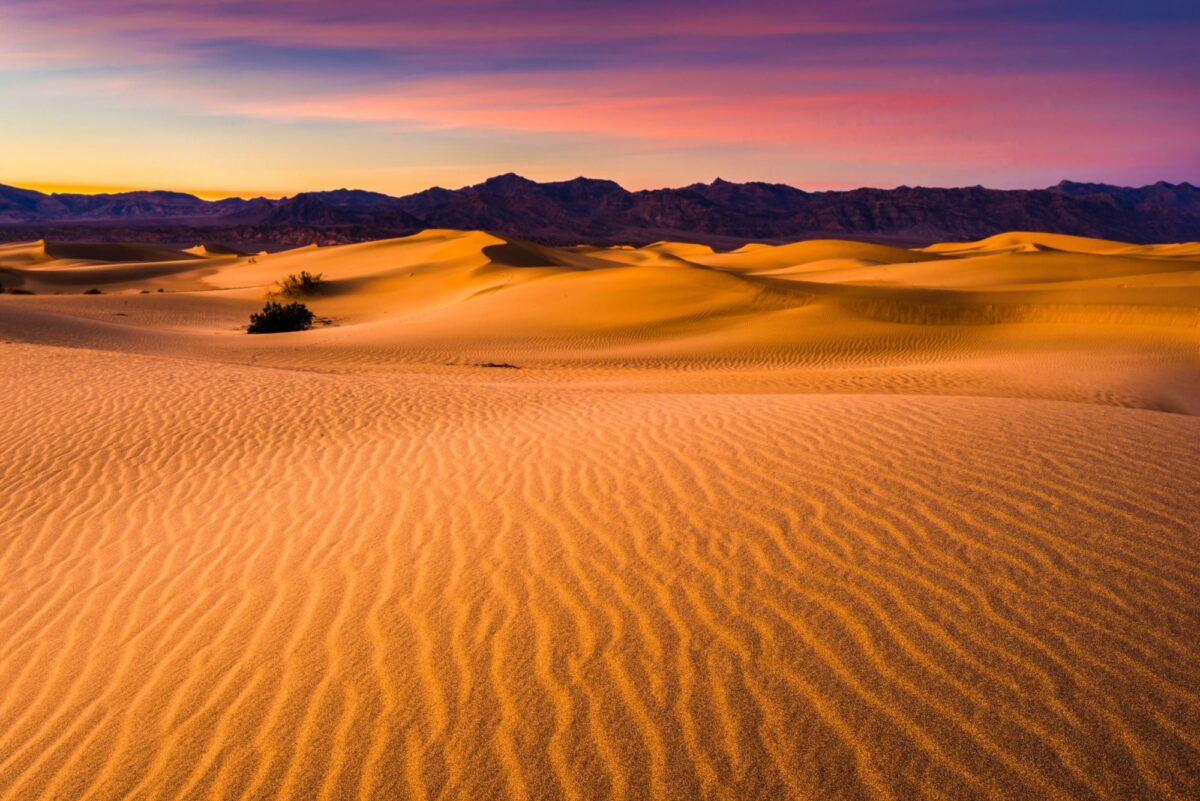
California's Death Valley National Park
Western national parks driving loop
California has more national parks (nine) than any other state in the US The Golden State is diverse, and its national parks reflect that diversity with national parkland that preserves offshore islands, starkly beautiful deserts, and temperate rainforests with redwood trees. This route is designed to hit all nine national parks in a loop around the state.
Western national parks driving loop
Approx. distance: 2,000 miles
Duration: 18 days
Suggested route: San Francisco, Redwood National Park, Lassen Volcanic National Park, Yosemite National Park, Sequoia and Kings Canyon National Parks, Death Valley, Joshua Tree National Park, Channel Islands National Park, Pinnacles National Park, San Francisco.
The route
Start in San Francisco and make the drive six hours north to Redwood National and State Parks. Make sure to detour off US 101 just north of Garberville for a drive along the Avenue of the Giants, a roadway amongst redwood forest along the Eel River. The North Coast towns of Arcata and Trinidad are worth a stop on your drive too. Arcata, 45 minutes south of Redwood National Park, is a great place to stock up on groceries, especially at Wildberries Marketplace.
The drive to Lassen Volcanic National Park from Redwood National Park heads east for four hours and passes through miles of national forest land. Stop in Redding, an hour out from Lassen, for supplies.
In the summer, it’s a 5 ½ -hour drive from Lassen Volcanic Park to Yosemite National Park. Stop in Reno, Nevada for some gambling or a night’s stay.
Three hours from Yosemite is Sequoia and Kings Canyon National Parks. The drive dips into California’s Central Valley and passes through the city of Fresno.
Driving from Sequoia and Kings Canyon National Parks to Death Valley National Park involves a 5 ½ -hour route around the southern end of the Sierra Nevada Mountains. The route passes through Bakersfield, where country music fans should stop into Buck Owens’ Crystal Palace.
To reach California’s other desert park, Joshua Tree National Park, from Death Valley, it’s a four-hour drive through the Mojave Desert.
For a wildly different experience, drive four hours from Joshua Tree National Park to Ventura Harbor, where you can reserve a ride on a boat run by the concession Island Packers out to one of the Channel Island National Park’s five islands.
From Ventura Harbor, it’s a four-hour drive to Pinnacles National Park in the Salinas Valley. If possible, stop in the pleasant California coastal cities of San Luis Obispo and Santa Barbara for a meal or to view some worthwhile sites including the historic Santa Barbara Mission.
To close the loop, drive from Pinnacles National Park 2 ½ -hours to San Francisco.
What to see
Redwood National and State Parks
Redwood National and State Parks are home to the world’s tallest trees, which grow more than 350 feet tall. See them from the national park’s Lady Bird Johnson Trail or within Prairie Creek Redwoods State Park on Cal-Barrel Road or the Cathedral Trees Trail. Head out of the redwoods for a hike in Prairie Creek State Park’s Fern Canyon for a different kind of hike: a walk through a gorge with fern-draped walls that was the backdrop for scenes in Jurassic Park 2.
Once you’ve worked up a thirst, head to Lost Coast Brewery for drinks and dinner.
Lassen Volcanic National Park
Lassen Volcanic National Park is a wonderland of volcanic activity including bubbling pots and lava tubes. Hikers should attempt to hike up 10,457-foot high (3,187 meters) Lassen Peak. A different way to experience the park is to kayak or stand-up paddleboard around Manzanita Lake.
Yosemite National Park
It’s well worth seeing the world-famous Yosemite Valley. Some of the valley’s best hikes include the 2.4 miles (3.9 km) hike up Mist Trail to the top of Vernal Fall or the mile hike up to Columbia Rock for superb valley views. Head to the park’s Hetch Hetchy region or Tuolumne Meadows off Tioga Road for more solitude.
For a self-guided tour, hire bicycles at Curry Village and take a two-mile ride to Mirror Lake, or hire them at Yosemite Valley Lodge for a more strenuous 5-mile ride to Half Dome Village.
As ever, the climbing hotspots of El Capitan and Half Dome offer stunning walls of granite, which are best viewed at sunset or sunrise.
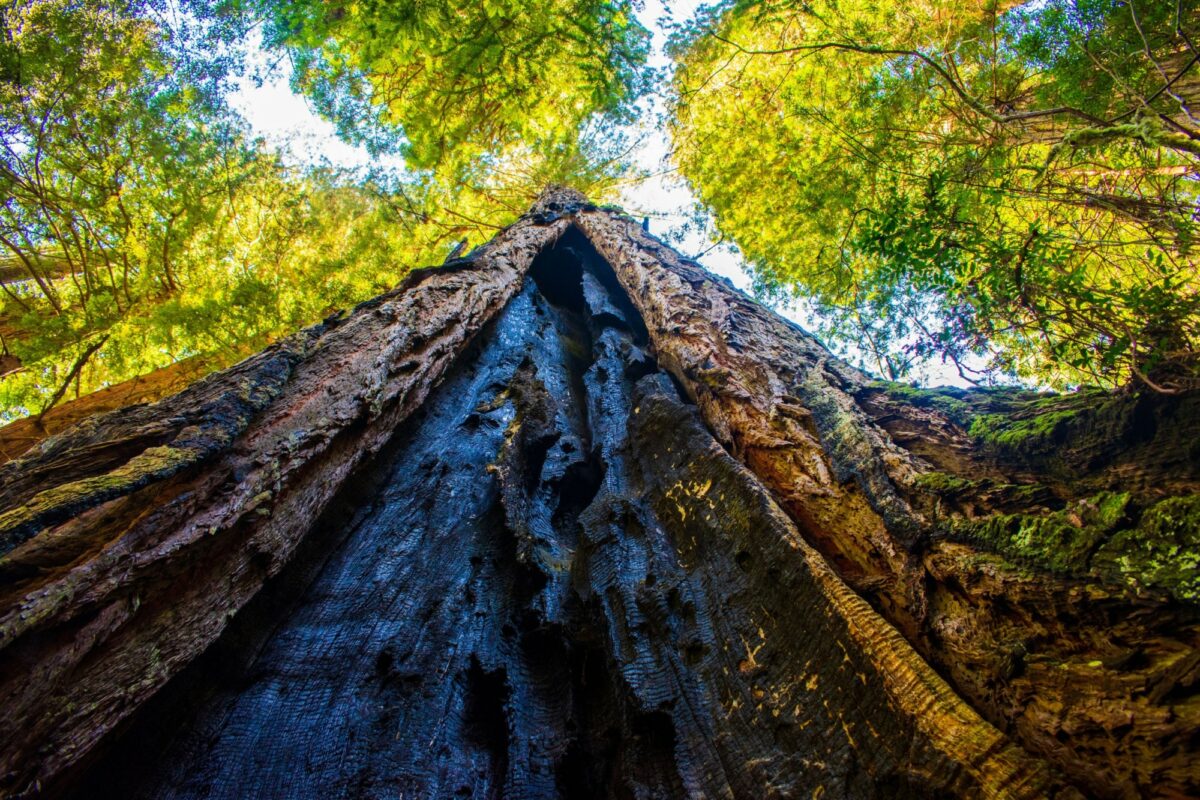
Giant Redwood tree in Redwood State Park
Sequoia and Kings Canyon National Parks
Sequoia National Park has forests of giant sequoia trees including the world’s largest, the General Sherman Tree. In addition to hiking through giant sequoia trees, visitors can go horseback riding or rock climbing in the park.
Death Valley National Park
In Death Valley, you will be in the largest national park in the continental United States. Take a scenic drive along Badwater Road to Badwater Basin, located 282 feet below sea level, or take a tour of the Star Wars filming locations within the park.
For hiking, take on the moderate two-mile Golden Canyon trail, or for something longer, head to Dante’s View for lookouts across the Valley to Telescope Peak and Badwater Basin below.
Death Valley’s arid climate and range of elevations mean it is home to lots of different animals, including roadrunners, lizards, coyotes and even bobcats. Visitors in spring to Salt Creek can see the pupfish – the only landlocked fish in the United States.
Joshua Tree National Park
Named for a unique looking desert plant, Joshua Tree National Park offers hiking, birding, and horseback riding along with climbing, bouldering, highlining, and slacklining on its many rock formations. Take the short Indian Cove walking trail for the best views of the eponymous Joshua tree, or head to Keys View – the highest point in the park – for views across the Coachella Valley, Palm Springs and peaks as far as Mexico. Come at sunset for orange and red hues that spread out across the desert.
Be sure to visit the nearby Pioneertown, a hip community built around a 1940s movie set, or cut short your California National Park loop by heading to Los Angeles, a two and half hour drive west.
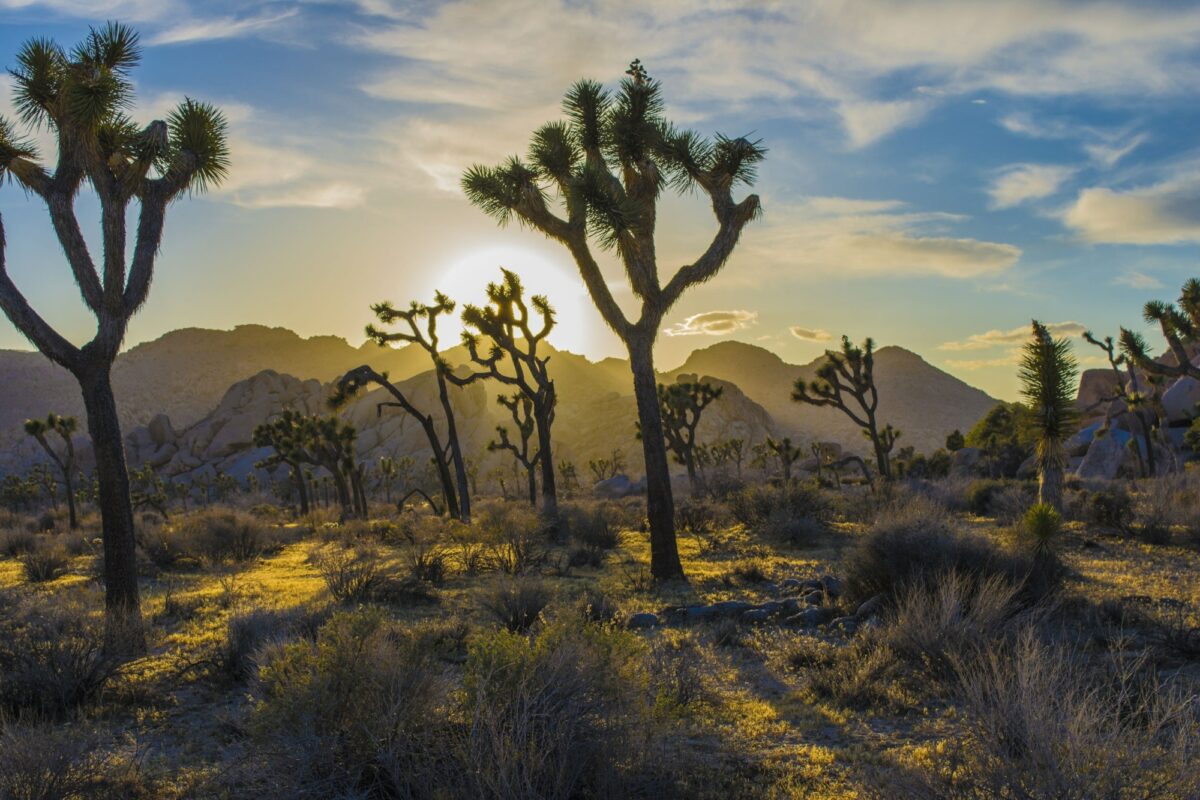
Sunset at Joshua Tree National Park
Channel Islands National Park
Whether you visit the tiny Channel Islands National Park’s Anacapa Island or Santa Cruz Island, you’ll experience a California coastal landscape devoid of development. Recreational opportunities abound from hiking to sea kayaking to snorkelling and scuba diving.
Pinnacles National Park
Pinnacles National Park was formed from the eroded sections of an old volcano. Its unique scenery includes rock spires and talus caves. One recommended hike from the park’s western entrance is the 4.3-mile Juniper Canyon Loop, which includes a section of trail with stairs cut into a ridge of rock. Look out for the endangered California condor flying overhead. The condor is the largest land bird in North America.
Best times for Western US road trips
Climate, seasons, and how to avoid the crowds
The seasons greatly affect travel in the national parks of the western United States. During the summer months between May and September, temperatures in desert parks like Death Valley can soar to 110 degrees and higher. These months are also the busiest times for visitors to national parks like Yosemite National Park and Crater Lake National Park.
Meanwhile, winter snowfall in mountainous parks (Yosemite National Park, Rocky Mountain National Park) results in facility closures and limited access, particularly between November and March. Destinations including Yosemite’s Tuolumne Meadows and Rocky Mountain National Park’s Trail Ridge Road are closed during this time of year.
January and February are ideal times to visit Death Valley National Park. Daytime temperatures in the park hover around 60 degrees (15.5 Celsius), while nighttime brings cool but not freezing temperatures around 40 degrees (4.5 Celsius). February is when the desert’s many wildflowers begin to bloom, painting the park with colour.
Nearby Joshua Tree National Park is prime for visiting in March due to that month’s mild temperatures and wildflower displays. It’s also the best time to go hiking or rock climbing on the park’s granite rock formations.
With snow on the peaks of the Sierra Nevada Mountains melting, April and May is when Yosemite’s famed waterfalls roar to life. Though the park’s higher elevation areas will still be closed, visitors are treated to Yosemite Falls and Vernal Falls at their grandest along with blooming wildflowers and smaller crowds.
Colorado’s Rocky Mountain National Park is one of the highest national parks in the country and ranges from 7,680 feet (2,396 metres) to 14,259 feet (4,346 metres) in elevation. The park’s popular Trail Ridge Road, which gives visitors access to alpine tundra, is only open from June to September. Likewise, the summer months of July and August are the best times to visit Olympic National Park due to less rainfall in the region and the park offering more activities to the public.
September and October are prime visiting times for Grand Canyon National Park, when there’s both cooler temperatures and smaller crowds. The autumn months also offer a window to visit rugged Channel Islands National Park off the coast of California. Before the winter rains come, the islands are warm and dry.
November and December bring cooler temperatures out west and snow at high elevations. For the unique experience of ice skating in a national park, head to Yosemite to glide around on the Curry Village Ice Skating Rink. Or, wait until mid-December to enjoy skiing or tubing at Yosemite’s Badger Pass Ski Area.
Festivals and events
In the summer months, western US national parks have a full schedule of guided hikes, talks, campfire presentations and more. The offseason find the parks hosting more specialised annual festivals and events meant to draw people into the parks during less busy times.
Spanning six sessions in January, Chef’s Holidays brings world-renowned chefs to Yosemite National Park’s Majestic Yosemite Hotel for cooking demos and multi-course meals. In February, Colorado’s Mesa Verde National Park puts on a Winterfest, where visitors can explore the park in moonlight while being warmed up by hot chocolate and hot cider.
At the height of summer, Grand Canyon National Park throws the Grand Canyon Star Party in June, one of the best times of the year to see the night sky in all of its glory. Throughout the park, volunteer astronomers set up telescopes to bring stars, planets, and more into focus for visitors.
Celebrate the old, wild west at the Death Valley 49ers Encampment and Western Music Festival at Death Valley National Park in early November. Expect music, scenic horseback rides, blacksmithing, and gold panning at Furnace Creek inside the park.
Step back in time for the holiday season at Yosemite National Park’s Bracebridge Dinner, which has been going on since 1928. The December festivities in The Majestic Yosemite Hotel are meant to evoke Christmas Day in England in 1718 with song and a seven-course feast.


